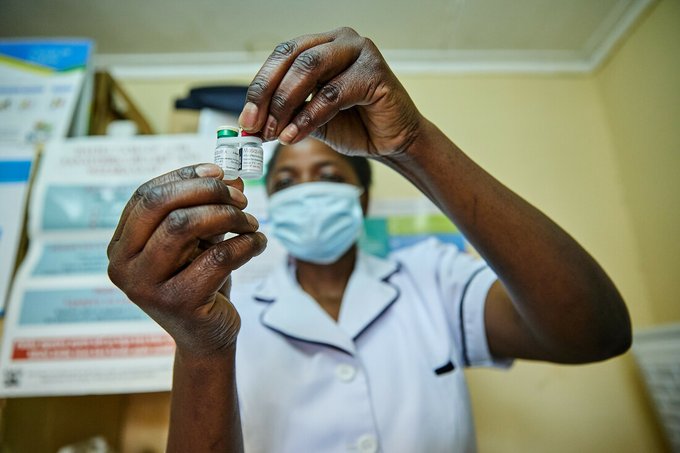In a devastating surge, 39 Nigerians have succumbed to Lassa fever in the first three weeks of 2025, according to the latest report from the Nigeria Centre for Disease Control and Prevention (NCDC). As the outbreak continues to spread, Edo and Taraba states have emerged as the worst-hit, recording the highest fatalities.
Lassa fever, a viral disease typically transmitted through contact with infected rodents, has claimed the lives of many, with young adults being disproportionately affected. The NCDC’s figures reveal that the majority of the victims fall within the age group of 21 to 30 years, highlighting the vulnerability of this demographic. As of January 30, 2025, the outbreak has shown no signs of abating, with more suspected cases continuing to surface across the country.
The States Most Affected
The breakdown of deaths across various states paints a grim picture. Edo and Taraba lead with nine deaths each, closely followed by Ondo with eight. Bauchi, Ebonyi, and Gombe states have also reported casualties, with three to four deaths recorded in each. Despite the widespread nature of the disease, some states like Kogi, Plateau, and Nasarawa have seen fewer fatalities, with only one death each.
Edo State, in particular, has been struggling with a sharp increase in suspected cases. In the first three weeks alone, the state reported 266 suspected Lassa fever cases. Ondo follows closely with 250 suspected cases, while Bauchi recorded 154. Although the exact cause of the surge is still under investigation, health experts attribute it to the rapid spread of infected rodents in these regions.
Rising Cases and Affected Demographics
The situation report highlights the escalating number of cases being managed at treatment centers across the country. According to the NCDC, 175 cases are currently being treated in designated facilities, while 162 individuals have been listed as contacts, with 109 still under follow-up. The outbreak has further strained public health resources, as healthcare professionals work tirelessly to contain the spread of the virus.
“Every year, we see a spike in Lassa fever cases, but this year’s numbers are particularly concerning,” said Dr. Helen Okeke, a public health specialist in Abuja. “We are seeing a lot more young people infected, and the virus is spreading faster than we anticipated.”
Experts have warned that Lassa fever is especially deadly when not caught early. Symptoms such as fever, headache, sore throat, vomiting, and chest pain often overlap with other illnesses, making it difficult to diagnose in the early stages. “If you experience any of these symptoms and have had contact with rodent droppings or urine, you should seek immediate medical attention,” said Dr. Okeke.
Efforts to Combat the Outbreak
The Nigerian government, through the NCDC, has ramped up efforts to curb the outbreak. Health officials are urging citizens to take precautions to avoid contact with rodents, which are the primary carriers of the disease. The NCDC also emphasized the importance of early diagnosis, as well as the need for better sanitation practices in communities where Lassa fever is prevalent.
In addition to the ongoing public awareness campaigns, health authorities have focused on bolstering medical infrastructure, ensuring that treatment centers are equipped to handle the increasing number of cases. However, experts believe that stronger community engagement is key to controlling the outbreak. “Local communities need to take this seriously and work with health authorities to eliminate rodent breeding grounds,” said Dr. Chinedu Nnamdi, an epidemiologist at the University of Nigeria Teaching Hospital.
The Role of Rodents and Environmental Factors
Rodents, particularly the multimammate rat, are known to transmit Lassa fever through their urine and droppings. The disease can also spread through direct contact with an infected person’s bodily fluids, making it particularly dangerous in densely populated areas. In regions with poor waste management and inadequate sanitation, such as parts of Edo and Taraba, the risk of an outbreak is heightened.
“In some of the worst-hit areas, poor sanitation practices and environmental conditions contribute to the spread of Lassa fever,” said Dr. Nnamdi. “Rodents thrive in these environments, and without proper waste disposal, the cycle of infection continues.”
Health experts also pointed out that climate change could be influencing the rise in Lassa fever cases. Warmer temperatures and altered rainfall patterns may be driving rodents into new areas, thus increasing the chances of human exposure.
The Road Ahead: Public Health Recommendations
As the number of Lassa fever cases continues to rise, health authorities are urging Nigerians to remain vigilant and take necessary precautions. The NCDC has provided a set of guidelines for preventing the disease, including proper food storage, hygiene practices, and securing homes against rodent infestations. Additionally, the government has vowed to continue efforts to strengthen the healthcare system and provide adequate resources for the treatment and care of infected individuals.
Despite the ongoing challenges, there is hope that with increased public awareness and collaboration between health officials and communities, Nigeria can curb the current outbreak and prevent future epidemics. “We are doing all we can, but we need the public’s cooperation to prevent further spread,” said Dr. Okeke.

